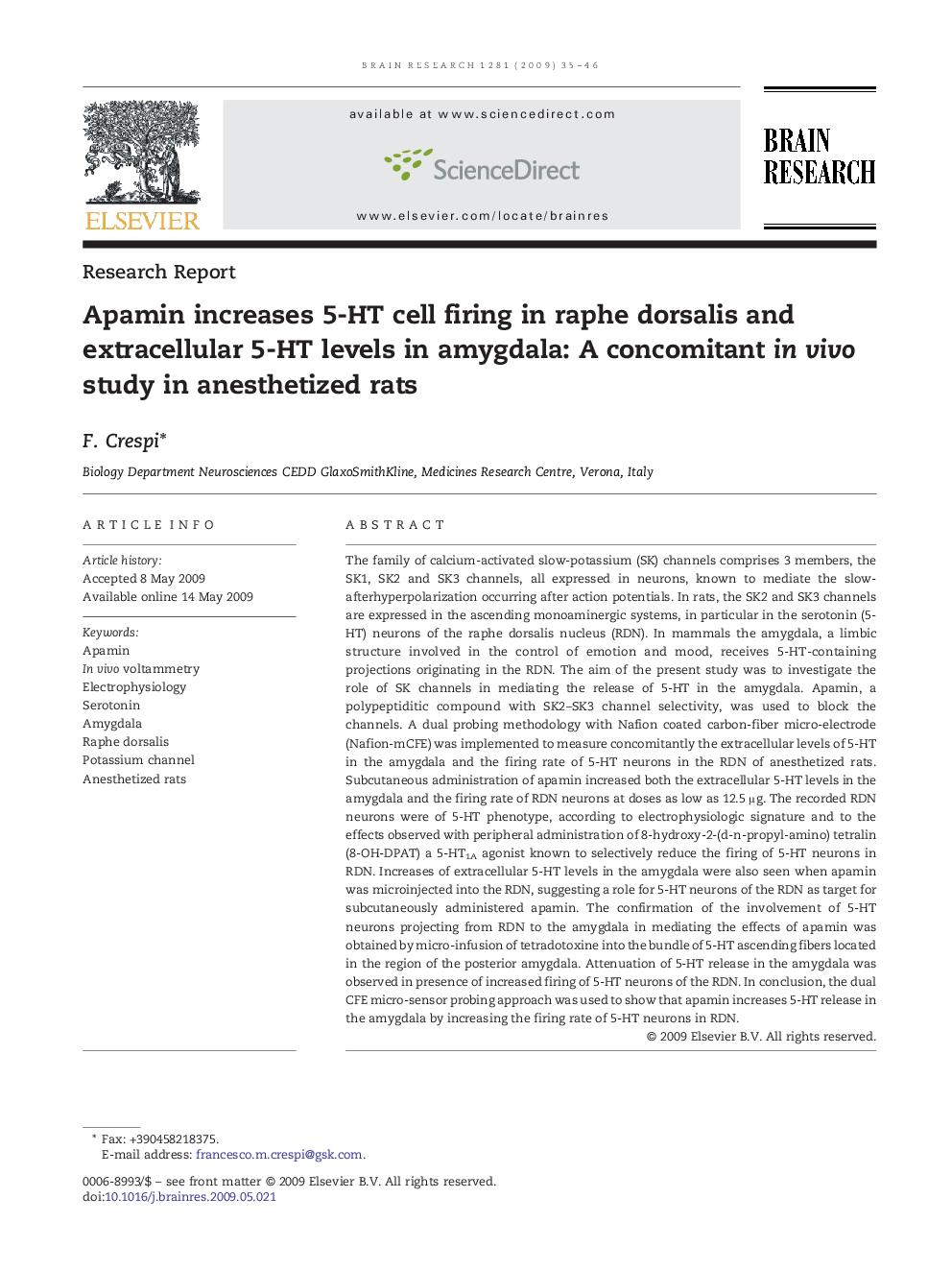| Article ID | Journal | Published Year | Pages | File Type |
|---|---|---|---|---|
| 4328152 | Brain Research | 2009 | 12 Pages |
The family of calcium-activated slow-potassium (SK) channels comprises 3 members, the SK1, SK2 and SK3 channels, all expressed in neurons, known to mediate the slow-afterhyperpolarization occurring after action potentials. In rats, the SK2 and SK3 channels are expressed in the ascending monoaminergic systems, in particular in the serotonin (5-HT) neurons of the raphe dorsalis nucleus (RDN). In mammals the amygdala, a limbic structure involved in the control of emotion and mood, receives 5-HT-containing projections originating in the RDN. The aim of the present study was to investigate the role of SK channels in mediating the release of 5-HT in the amygdala. Apamin, a polypeptiditic compound with SK2–SK3 channel selectivity, was used to block the channels. A dual probing methodology with Nafion coated carbon-fiber micro-electrode (Nafion-mCFE) was implemented to measure concomitantly the extracellular levels of 5-HT in the amygdala and the firing rate of 5-HT neurons in the RDN of anesthetized rats. Subcutaneous administration of apamin increased both the extracellular 5-HT levels in the amygdala and the firing rate of RDN neurons at doses as low as 12.5 μg. The recorded RDN neurons were of 5-HT phenotype, according to electrophysiologic signature and to the effects observed with peripheral administration of 8-hydroxy-2-(d-n-propyl-amino) tetralin (8-OH-DPAT) a 5-HT1A agonist known to selectively reduce the firing of 5-HT neurons in RDN. Increases of extracellular 5-HT levels in the amygdala were also seen when apamin was microinjected into the RDN, suggesting a role for 5-HT neurons of the RDN as target for subcutaneously administered apamin. The confirmation of the involvement of 5-HT neurons projecting from RDN to the amygdala in mediating the effects of apamin was obtained by micro-infusion of tetradotoxine into the bundle of 5-HT ascending fibers located in the region of the posterior amygdala. Attenuation of 5-HT release in the amygdala was observed in presence of increased firing of 5-HT neurons of the RDN. In conclusion, the dual CFE micro-sensor probing approach was used to show that apamin increases 5-HT release in the amygdala by increasing the firing rate of 5-HT neurons in RDN.
